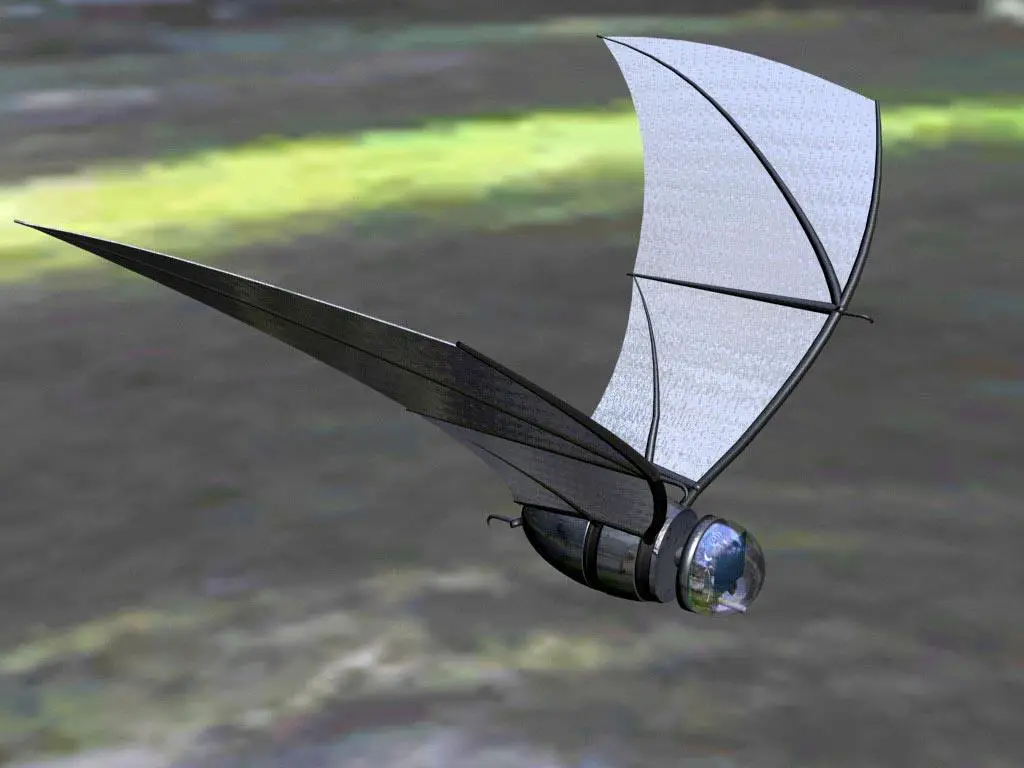
The robotic bat is planned to perform short-term surveillance missions supporting advancing troops in the battlefield. It could perch at a street corner and send data regarding its immediate surroundings, or could land on a building for longer surveillance assignments. Real-time reports of its activity will constantly be sent to the commanding unit.
Kamal Sarabandi, Director of the Center for Objective Microelectronics and Biomimetic Advanced Technology (COM-BAT), commented on the project: “We’re trying to push the edge of our technologies to achieve functionality that was not possible before.” The University of California at Berkeley and the University of New Mexico are also involved in the COM-BAT project. All of the scientists joined forces in order to implement the vision of a small, robotic aircraft capable of sensing and communicating. Each university is responsible for developing a certain subsystem of the robotic bat.
The University of Michigan researchers are focusing on the microelectronics. They will develop sensors, communication tools, and batteries for the new “Bat” micro-aerial vehicle. Engineers envision tiny cameras for stereo vision, an array of mini microphones that could home in on sounds from different directions, and small detectors for nuclear radiation and poisonous gases. The robotic bat will also have the ability to navigate at night, using low-power miniaturized radar and a very sensitive navigation system. Its lithium battery will recharge using solar energy, wind, and vibrations, and the bat will communicate with the troops using radio signals.
“Bats have a highly-attuned echolocation sense providing high-resolution navigation and sensing ability even in the dark, just as our sensor must be able to do,” Sarabandi said. Echolocation allows bats to navigate by emitting sounds and detecting the echoes. By basing the robotic bat on an audio navigation system, the scientists can avoid the difficulties encountered when using vision-based systems. The robot’s body is designed to be about six inches long and to weigh about a quarter of a pound. Its expected energy consumption will be 1W.
University of Michigan researchers intend to improve the technologies currently in use. They will work to develop quantum dot solar cells that double the efficiency of current solar cells. Furthermore, they expect their autonomous navigation system, which would allow the robot to direct its own movements, to be 1,000 times smaller and more energy efficient than systems in use today. If the planned improvements will indeed be successful, the researchers believe they will provide the bat with a communication system ten times smaller, lighter and more energy efficient than currently available systems. “Throughout this research, we expect to make technological breakthroughs and have a much wider range of applications for other types of engineering problems, from medical to industrial,” Sarabandi said.
TFOT has covered a micro robotic fly developed by researchers at Harvard University. Other robots recently covered by TFOT are the rat robot, which is designed to aid in rescuing missions, and the Lemur, a robot developed by NASA in order to assist in space missions.
For more information on the robotic reconnaissance bat see the dedicated University of Michigan website.










